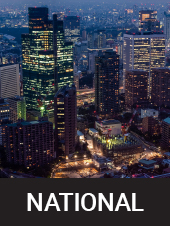WINNIPEG — Governments and nonprofit groups are taking some time to review this year’s wildfire season and the unprecedented challenges posed by the evacuation of tens of thousands of people across vast swaths of the country.
The Canadian Red Cross registered 52,000 people in the Prairies, Ontario and Atlantic Canada, making it the agency’s largest domestic operation in recent memory.
Several hundred flights were carried out to evacuate people from remote communities, some inaccessible by road.
Two people have died after being trapped in a fire near Lac Du Bonnet, Man.
The length of the wildfire season also contrasted sharply with recent years. In some parts of the country, a dry spring meant the forest floor didn’t “turn green,” so the ground cover provided fuel for fires to grow and spread quickly.
In Manitoba, where about 32,000 people fled their homes, fires began in early spring and continued to erupt throughout most of the summer. Snow Lake, a town of 1,000 people, was evacuated twice.
For Flin Flon Mayor George Fontaine, whose community of 5,000 was evacuated for four weeks starting in late May, a key takeaway is that wildfire crews must be prepared to tackle fires earlier than normal.
“We can no longer wait, for example, until the long weekend in May to equip (wildfire crews). Nature is not waiting and we cannot,” Fontaine said in an interview.
More fires also require more water bombers, Fontaine said. When the flames broke out near Flin Flon in the northwest of the province, water bombers were already battling fires in Whiteshell Provincial Park in the southeast.
Related Videos
Fontaine praised the response of the Manitoba government and neighboring communities, including the Opaskwayak Cree Nation, which accepted busloads of evacuees who were unable to leave.

Receive the latest national news
For news impacting Canada and around the world, sign up to receive breaking news alerts delivered directly to you as it happens.
“We had to requisition school buses and find volunteers to drive them,” he said.
The buses were able to make the 90-minute trip, drop off people waiting for travel further south and return to Flin Flon for more.
Things were more complicated in the Pimicikamak Cree Nation, where several thousand people from the community and surrounding areas were airlifted on flights 500 kilometers south to Winnipeg.
Heavy smoke closed the local airport, so people were sent 25 miles away to Norway House. The trip included a bottleneck at a ferry crossing.
“It took 12 hours to get people to Norway House,” said Pimicikamak head David Monias.
It took a week to get everyone out of the area and the evacuation lasted about a month, starting in early July.
Evacuees had to register twice – once for transportation and once for accommodation, Monias said. Elderly people and people with health problems faced long waits in hallways, and dealing with the federal and provincial governments, as well as the Red Cross, meant there was duplication, he added.
In Winnipeg, Brandon and other communities, efforts were made to accommodate evacuees.
There were mass shelters, including those set up at an indoor soccer complex and Winnipeg’s main convention center.
Authorities tried to find hotel rooms for as many evacuees as possible.
But with up to 21,000 people out of their homes at one time and about 15,000 hotel rooms across the province — many of them occupied during the summer tourist season — it was an uphill battle. Some people were sent to Niagara Falls, Ont.
Monias said large open areas with cribs are not good for families, seniors or people with health problems. He would like governments to use their authority to cancel large events and free up hotel rooms.
“There needs to be some kind of understanding with some of the cities where we are sending our people to, to ensure that if events occur… to prioritize evacuees to remain there,” Monias said.
Prime Minister Wab Kinew expressed frustration at one point in the summer with a small number of hotel owners who he said were not offering their rooms.
He said he is considering using the Manitoba Development Center in Portage la Prairie — a former institution for people with intellectual disabilities that closed last year — as a ready housing option for evacuees.
Professor Shirley Thompson of the University of Manitoba’s Natural Resources Institute said with the frequency of wildfires increasing, having facilities dedicated to evacuees could mean better cultural supports and other services.
“Not everyone speaks English… but also because they are so far from home, having someone who sees their perspective is really important.”
Thompson also said northern First Nations lack extensive air quality monitoring to keep an eye on the effects of wildfires, as well as public facilities with filtered air, such as libraries.
The Manitoba government and the Canadian Red Cross have said they will conduct full reviews of their operations during the wildfire season.
“This takes time,” the Red Cross said in a prepared statement.
This report by The Canadian Press was first published Oct. 12, 2025.
© 2025 The Canadian Press





Leave a Reply